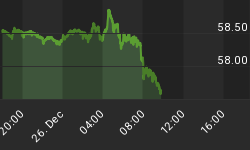The world's economy is passing through a low growth environment and this is in stark contrast to the first half of the last decade, when we had a global boom. Today, Europe is on the brink of recession, the US economy is growing at only 2% per year and it appears as though China is facing a major slowdown. Given these circumstances, we are of the view that the prices of natural resources will struggle to retain last decade's momentum.
Figure 1 shows that over the past decade, commodity prices grew at an annualised rate of approximately 9%, but 200 years of history suggests that this frantic growth rate is likely to moderate. According to Barry Bannister at Stifel Nicolaus, commodity prices are likely to increase by only 2-3% per year over the next decade (Figure 1).
Figure 1: Rolling 10-year commodity price growth

Source: Barry Bannister, Stifel Nicolaus
If Barry's estimate is on the mark, the Reuters-CRB (CCI) Index will only appreciate by approximately 35% over the next decade; a far cry from its recent gains. However, if historical patterns play out, in about 10 years from now, commodities will embark on another multi-year secular bull market, which will cause prices to triple (Figure 4).
Look. Long term forecasting is fraught with risk and at this stage, nobody knows whether Barry's forecast will come to fruition. Nonetheless, we tend to agree with the view that commodity prices will remain range bound for several years.
Within the commodities complex, the only bright spot we see is gold and even here, additional quantitative easing may be required to trigger another rally. Amongst the laggards, we believe that the industrial commodities will continue to underpeform and in this low growth environment, they should be avoided.
Figure 2 provides a snapshot of the relative peformance of various commodities. As you can see, with the exception of gold and a couple of grains, all the commodities have performed poorly over the past 52-weeks. Furthermore, you will note that the industrial metals (including palladium, platinum and silver) have been amongst the worst performers!
Figure 2: Commodities - not a pretty sight!

Source: www.thechartstore.com
Despite the fact that the prices of many industrials metals and softs have declined by almost 30% over the past 52-weeks and silver has lost approximately half of its value since last spring, it is interesting to note that investor sentiment towards commodities remains staunchly bullish.
Today, most hard asset bugs remain convinced that this decline is nothing more than a routine correction and after 10-years of gains, they are now conditioned to buy every dip. After all, nothing skews an investor's objectivity more than a decade long bull market and it appears as though the hard asset bulls are now making the same mistake.
For our part, the price action in the commodities complex is telling us that for several months, sellers have been more eager than buyers. Our personal view notwithstanding, nobody can dispute the fact that most commodities are currently in a downtrend and the recent weakness is much more pronounced than the previous 'corrections'.
If you review Figure 3, you will note that commodities are currently in a downtrend and the CCI Index is trading below its 40-week moving average. Furthermore, you can see that the previous rally attempt failed around the 40-week moving average. Thus, for us to turn bullish on commodities, the CCI Index will need to close above that critical level.
Figure 3: Commodities in a downtrend

Source: www.stockcharts.com
Now, we are aware that our sobering analysis on commodities may not sit well with some of our readers. However, when it comes to the investment business, we have learnt that it pays to stay objective and unbiased. Thus, given the fact that commodities are currently in a downtrend and their near term fundamentals have taken a turn for the worse, we feel it is our duty to call it as we see it.
Although we remain bullish about the long term (20-25 years) prospects of commodities, given the slowdown in global demand, we are of the view that hard assets will not provide stellar returns over the next decade. Therefore, we believe that this is not the time to overweight this sector.
We take the view that during this low growth environment, the natural tendency for commodity prices will be to drift lower, but this trend will be periodically interrupted by policy intervention. Accordingly, whenever any central bank unleashes 'stimulus', commodity prices may spurt temporarily but the economic reality will ultimately act as a headwind. Under this scenario, a 'buy & hold' strategy will be ineffective and only nimble traders will be able to retain their profits.
In summary, commodities are currently in a downtrend and we have no exposure to this sector. If and when prices break above the 200-day moving average, we may initiate a modest position; but our enthusiasm will remain muted by the sluggish economic situation.
















